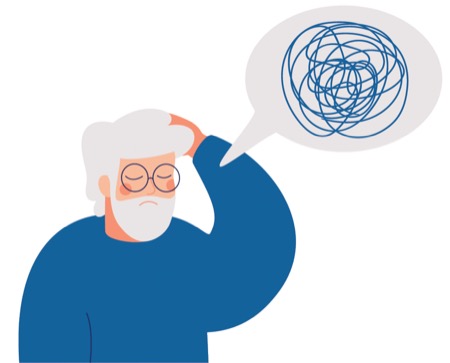NEW ORLEANS—Keeping patients at deeper levels of general anesthesia can reduce postoperative pain, but the practice comes at the cost of increased postoperative delirium and other adverse outcomes.
Given the findings from this meta-analysis, the researchers stopped short of recommending routine use of deep levels of anesthesia, although they noted that comprehensive preoperative screening would help determine patient risk factors for such postoperative events, which may help clinicians choose the depth of anesthesia during surgical procedures.
“Previous research regarding the depth of general anesthesia and its effects on postoperative outcomes have yielded conflicting results,” said Daisy Feng, MD, PhD, an anesthesiology resident at the University of Utah, in Salt Lake City. “Some papers say anesthesiologists should use lighter anesthesia, while others say deeper anesthesia is better. Given this inconsistency, our goal was to help answer that question.”
The systematic review and meta-analysis evaluated the effects of deep and light anesthesia on postoperative pain, cognitive function, recovery from anesthesia, complications and mortality.
Feng and her colleagues searched the PubMed, EMBASE and CENTRAL databases through January 2022 for randomized controlled trials comparing deep and light anesthesia in adult surgical patients. The study’s two primary outcomes were pain scores in the first hour after surgery and postoperative delirium, which was assessed using the Confusion Assessment Method. The researchers used Begg’s rank correlation test and Egger’s linear regression to assess for publication bias; trial sequential analysis and the GRADE (Grading of Recommendations, Assessment, Development, and Evaluation) methodology were utilized to evaluate the current evidence.
The initial search yielded more than 3,000 possible publications, of which the investigators ultimately included 26 trials comprising 10,743 patients in the meta-analysis. As Feng reported at the 2022 annual meeting of the American Society of Anesthesiologists (abstract A1037), it was found that when compared with light anesthesia, deep anesthesia (a mean difference in bispectral index score of –11 to –12) was associated with lower pain scores at rest in the first hour after surgery (weighted mean difference, –0.72; 95% CI, –1.25 to –0.18; P=0.009). Yet, deeper anesthesia was also found to be associated with an increased incidence of postoperative delirium (25.4% vs. 15.9%; risk ratio, 1.57; 95% CI, 1.28-1.91; P<0.0001). No publication bias was found with respect to the study’s two primary end points.
“So, if we keep the patient deep, they probably will have lower postoperative pain scores,” Feng said. “But, on the other hand, if we want to reduce the occurrence of postoperative delirium, we should keep the level of anesthesia relatively light.”
In terms of secondary outcomes, deep anesthesia also was associated with reduced pain at eight and 24 hours postoperatively, a longer time to extubation and prolonged hospital stay. On the other hand, no differences were found between light and deep anesthesia in terms of neurocognitive recovery, the occurrence of neurocognitive disorders between one and three months after surgery, the occurrence of major postoperative complications, or mortality.
Although the results of the meta-analysis do not support the use of deep anesthesia in clinical practice, Feng also noted that preoperative patient assessment may help clinicians determine the optimal therapeutic course for each patient.
“For me personally, if a patient has a greater likelihood of experiencing postoperative delirium—such as elderly patients, those with baseline cognitive dysfunction, or a patient with a history of stroke or other brain issues—I would probably keep them relatively light,” Feng concluded. “Although this would come at the cost of increased pain after surgery, it is likely more advisable to titrate analgesics in the postoperative period rather than risk acute neurocognitive dysfunction.”
Lisbeth A. Evered, MD, MSc, PhD, a visiting associate professor of neuroscience in anesthesiology at Weill Cornell Medical College, in New York City, was encouraged by more research on the topic, but said the results of the current meta-analysis do not definitively answer the question of the relationship between depth of anesthesia and postoperative outcomes, particularly delirium.
“My take on the literature as it stands at the moment is that it looks like there might be an association between the two, but there still is not sufficiently robust evidence to tell us that,” she said.
Indeed, Evered is one of the authors of a recent meta-analysis (Br J Anaesth 2023;130[2]:e243-e253) that assessed the effect of EEG-guided general anesthesia during surgery on the incidence of postoperative delirium. The meta-analysis, which included nine studies comprising 4,648 eligible patients, found that the incidence of postoperative delirium in patients undergoing light anesthesia was 19.0%, compared with 23.3% in the usual-care or deeper EEG-target group (P=0.054).
Despite the findings, Evered said more work is warranted in the area. “I’ve certainly published suggesting that there is an association between a decreased incidence of delirium and lighter levels of anesthesia,” she said. “But that’s not the whole story. Ultimately, I think we should be identifying specific individuals who are at risk of suffering postoperative delirium and acting accordingly.”
By Michael Vlessides
Evered and Feng reported no relevant financial disclosures. The abstract was honored as one of the meeting’s best.


